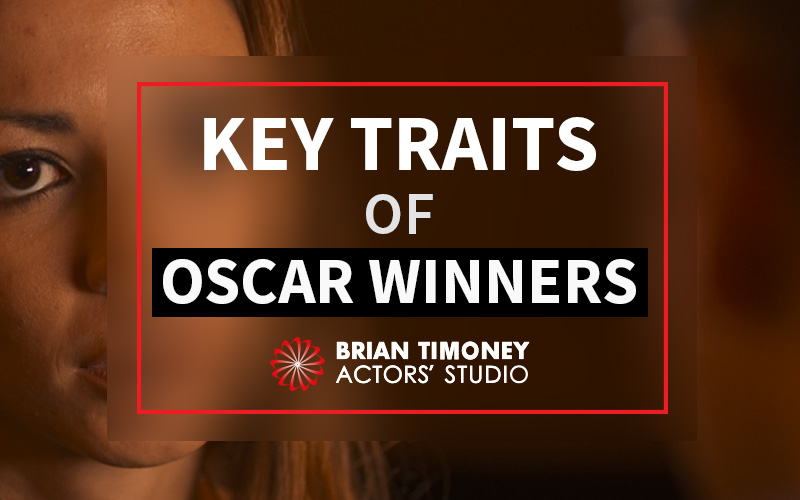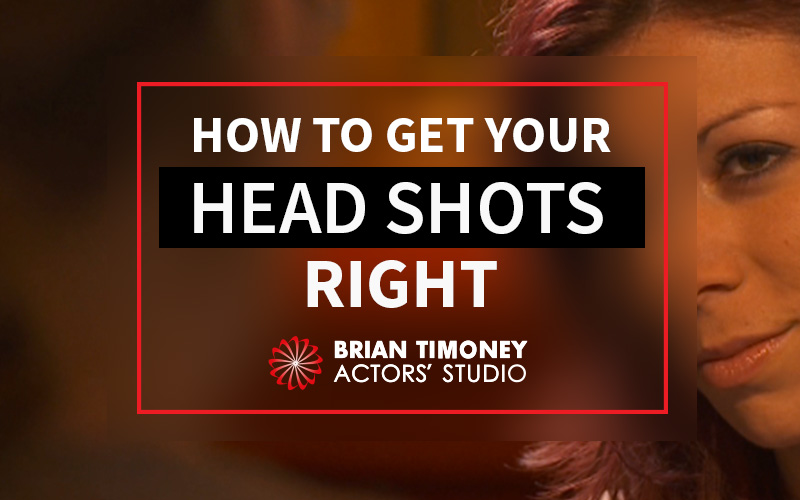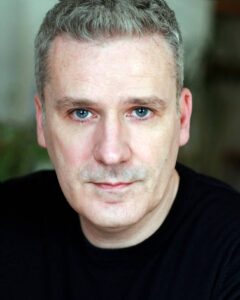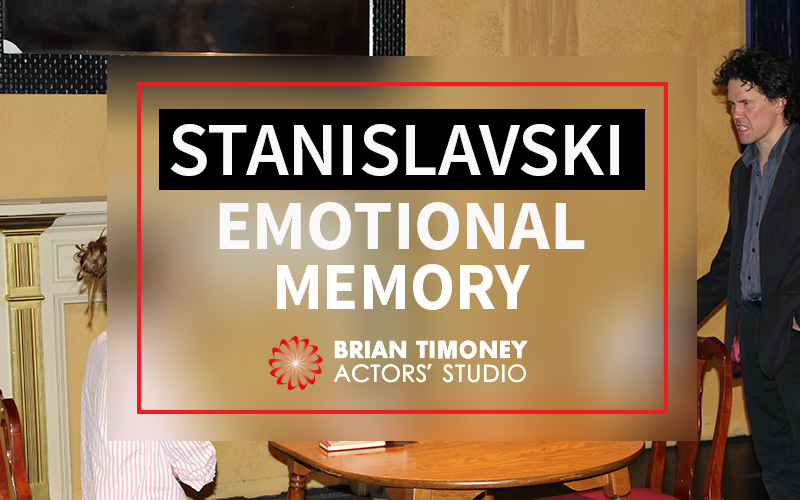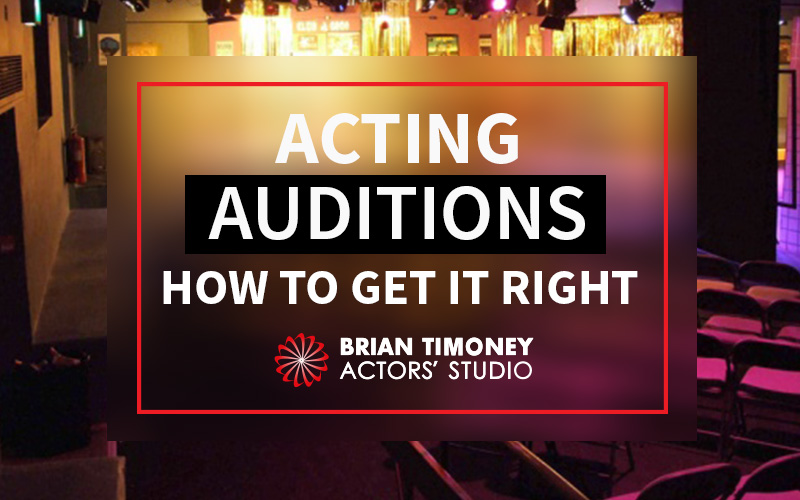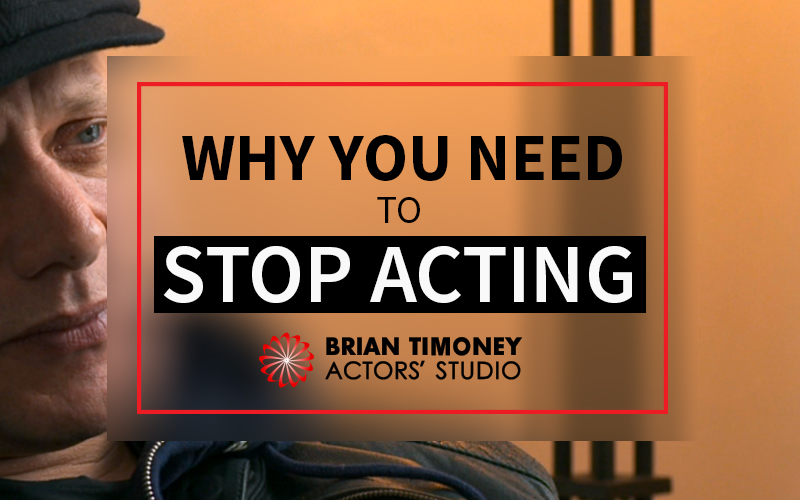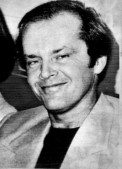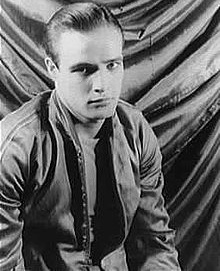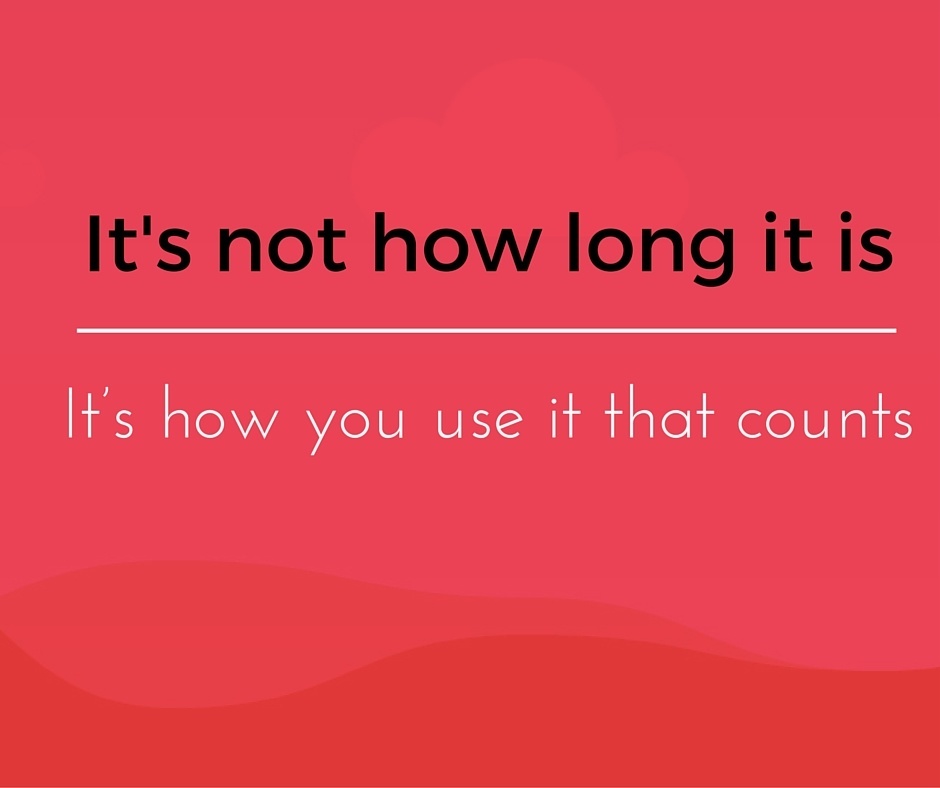“Acting is not about being someone different. It’s finding the similarity in what is apparently different, then finding myself in there.” – Meryl Streep
For aspiring film actors, winning an Academy Award (more commonly known as an ‘Oscar’) is the ultimate accolade. It shows that you are capable of performing at a level few other actors are able to achieve and is the ultimate seal of approval from the film industry. But what makes an Oscar-winning actor? What skills do they have in common that makes them first among their peers? Well, for many of them, it comes down to their familiarity with ‘The Method’.
Over 80% of Best Actor Academy Awards this century have been won by method actors who use The Method to take their performance skills to a level beyond what most non-method actors can achieve. There are many aspects to mastering The Method, but there are several key characteristics that we see time and time again in Oscar-winning method actors that are well worth emulating on your road to success.
Over 80% of Best Actor Academy Awards this century have been won by method actors
Dedication to character
Method actors will often go to great lengths to create an authentic performance. In preparation for his Oscar-nominated leading role in Taxi Driver, Robert De Niro actually worked as a cab driver, reportedly putting in 12-hour shifts driving fares around New York City to get into character.
Another common technique is to look to the animal kingdom for inspiration. Many followers of The Method base their physical approach to a role on different animals to give their characters unique and arresting ways of moving. For Taxi Driver De Niro based his performance on a crab as he felt his character was indirect and tended to shift from side to side. As Stanley in A Streetcar Named Desire, Marlon Brando imitated an ape, while Dustin Hoffman referenced a weasel in Midnight Cowboy. Method Acting training includes specific classes focusing on animal work to help actors master this important dramatic tool.
Using genuine emotions
Affective memory is a technique method actors learn, which allows them to tap into their own memories to create real emotional responses during a performance. This is achieved by working out the emotion they need to portray and then using experiences in their own life that triggered similar feelings in order to produce a genuine emotional response that recreates those feelings.
To do this, actors need to really know themselves, their own psyche, and how to explore this for dramatic effect. Learning to be a method actor involves learning to better know yourself and your own emotions and how to use your life experiences to create truly raw, engaging performances.
Tapping into their own life experiences
Of course, most actors will be called upon to act in scenes that have no direct analogue in their own lives. The trick is to understand how to successfully relate the emotions you need to convey with a relevant experience in your own life, even if the connection is not immediately obvious.
When filming the famous Russian Roulette scene for the film Deer Hunter, Christopher Walken said he was recalling being sent to summer camp by his parents, which he hated. He was able to use those feelings of being betrayed, ostracised, and alone to inform his performance in a totally different scenario because it required the same feelings from his character.
Strong self-discipline
All of this focus on emotions might make it sound like method actors are likely to be volatile or in danger of going out of control at the drop of a curtain. In fact, successful method acting requires serious self-discipline. Learning The Method involves a great deal of time, effort and concentration in order to be able to call up the right emotions at the right moment. Through this learning process, method actors become truly in control of themselves and their emotions in a way most regular actors will never achieve, giving them an advantage both as performers and in their overall work ethic.
Willingness to sacrifice their ego
Actors can have a reputation for being egotistical, but the truly great performers don’t worry about how they are perceived, only about the best way to play their characters with absolute truth. To lose yourself in a character like this, you have to be willing to put aside your own ego, no longer thinking about yourself and your self-image, but focusing purely on becoming your character.
Robert De Niro offers another great example here, with the extreme physical transformation he underwent for his role in Martin Scorsese’s Cape Fear. De Niro completely changed his appearance, including building an impressively muscular physique, covering himself in tattoos and even having a dentist grind down his teeth. This level of dedication to really becoming his character resulted in an incredible performance that shows just what a dedicated method actor can achieve with the right training and attitude.
Are you ready to unlock your hidden acting potential? Register your interest in one of our industry-leading method acting classes today and find out how to make your ambitions of a rewarding professional acting career a reality. We are always happy to hear from prospective students, so if you have any questions, please don’t hesitate to get in touch.
Head shots are an essential part of any professional actor’s arsenal as these are often the thing that first get a casting director interested in you for a role. Having professional-quality head shots is therefore vital when trying to break into theatre, film or television performance, but there’s more to a great set of head shots than just getting some snaps of your face from a couple of angles.
There are numerous mistakes rookie actors can make with their head shots, some of which we see time and time again. Agents and casting directors see dozens if not hundreds of head shots every week, so the slightest mistake can quickly see your image consigned to the bin in favour of one of your many, many competitors. You need to make sure you don’t give them any reason to reject you out of hand. To make sure your head shots do the job and start getting you the auditions you need, there are some key mistakes you really need to avoid.
Don’t get carried away with Photoshop
We all want to look our best in our head shots. They’re the first impression casting directors and other decision makers will get of us and, after all, everyone is doing it, right? As tempting as it can be to engage in a little bit of Photoshopping to smooth out minor blemishes and help get your foot in the door, you must beware!
If you start touching up your head shots, you can end up creating false expectations. If you get called to an audition, only for the casting director to see that you look nothing like your photo because you got carried away with making little improvements, they’ll soon show you the door. Remember, they’re looking for the face they’ll be putting in front of audiences, not an idealised version of it, so if your actual face doesn’t match the head shots that got their interest, you’ll be wasting your time and theirs. You will also potentially ruin your reputation, making it less likely you’ll get called to auditions in the future.
Avoid artificial posing
It can be tempting to think you need to make yourself stand out by doing something unusual or striking in your head shots. Do not do this. There is a classic formula for head shots that you really need to stick to. Your picture should be shot from the top of chest up so the focus is firmly on your face, with a neutral expression or small smile. Do not be tempted to put a hand on your face as you may have seen in some clichéd old head shots.
The idea is to show what you look like in a simple, professional way, highlighting what you have to offer. Anything you do that deviates from the norm simply acts as a distraction and can make it harder for casting people to focus on your actual qualities. This also goes for excessive make-up or outlandish clothes which could pull people’s attention away from your underlying characteristics.
Remember: use an amateur and look like an amateur
Getting professional-quality head shots costs money, which can be off-putting to new actors trying to break into the field. With pretty much everyone having cameras built into their phones now, it can be tempting to think you can take your own head shots, or get a friend to do it, saving you a tidy sum. The problem is, even with the best camera in the world, you or your friend are unlikely to have the necessary skills to get professional looking head shots.
A professional photographer who specialises in head shots will know all the tricks to get you looking your best, including selecting the right lighting, framing, make-up and clothes. They’ll also know how to get you into the right pose and bring out the qualities that make you unique, which ultimately are what a casting director is looking for. Finally, a true professional will know how to use the right filters, lenses and just the right amount of Photoshop to give your head shots a professional gloss. All this means you’ll give the right first impression when your picture lands in a casting director’s hands.
A great set of head shots is just one of the things you’ll need to become a successful professional actor. As well as working with the UK’s top method acting teacher, our One Year Ultimate Acting Program incorporates a career development package. This includes head shots, CV creation assistance and everything you need to take the method acting skills we teach out into the real world. Get in touch today to find out more.
“The person you are is a hundred times more interesting than the best actor you could ever become…” – Konstantin Stanislavski
A name recognised even by non-actors, Konstantin Stanislavski and his ‘System’ of method acting is responsible for the success of theatrical heavy-hitters such as Philip Seymour-Hoffman and Daniel Day-Lewis.
However, you don’t need a double barrelled surname to master the dramatic techniques of the system – you only need to have a basic understanding of human emotion. In this way, at least acting jobs are safe from robots.
Method acting asks not that you “act,” but rather that you:
“put life into the imagined circumstances and actions until you have completely satisfied your sense of truth.”
It’s been argued that since the inception of acting, many centuries or even millennia ago, we have recognised that a piece is most effective when the actor truly feels the emotion they’re trying to convey. Aristotle himself swore that:
“the secret to moving the passions in others is to be moved oneself”.
One way of doing this is through emotional memory.
Emotional Memory
Also called Affective Memory, this technique asks us to forget about “acting” out emotions. Feeling emotion is such a visceral part of the human experience that it is at the same time universal and difficult to fake. Because it’s universal, though, you don’t have to fake it – just remember it.
A form of Emotional Memory we have probably all practiced is “crocodile tears”. Think back to when you were a child, trying to make yourself cry to get more pudding, to go home, or to get your sibling in trouble. You probably made these “crocodile tears” by thinking of something sad, like the death of a beloved pet. This is the Stanislavsky system in action.
To summarise: Emotional or Affective Memory asks the actor to call on a memory similar in detail or sensation to their character’s situation. Through empathy, the actor lives the character rather than simply reciting it.
Empathetic Emotional Memory
The aim of Emotional Memory is to feel the emotion your character is going through, but you might not even need a real memory – just an exceptional sense of empathy. Something you saw or read about might evoke your character’s emotion better than the script.
For example; if your character is feeling outraged because someone got a promotion over them, you might not relate. However, you might feel similarly outraged when you remember that since being fired from Top Gear, Jeremy Clarkson has become the highest-paid TV host in Britain.
Although this situation does not directly affect you, it can still cause a deep sense of indignation. This is enough. So long as you feel the emotion of your character – no matter how you get to it – you are enacting the Stanislavsky system.
Sense Memory
Sense Memory, popularised by Lee Strasberg, is a variant of Emotional Memory. This take on the Stanislavski system asks that the actor take time out to recall every detail of their memory. They must remember not just the emotion, but what they heard, tasted, touched, smelled, and saw whilst feeling it.
The effectiveness of recollecting physical sensations in Emotional Memory is still highly debated, but modern Stanislavski academics such as Strasberg suggest it can help actors completely relax into the memory.
Exercises
Sense Memory
Practicing Sense Memory can help ease you into practicing Emotional Memory. To begin with, try to remember an instance of each sense:
See –
Your mother’s face, in as much detail as possible.
The outfit you wore to your first school formal.
A starry sky.
Hear –
Rain against the roof.
Waves on the shore.
Your alarm clock.
Smell –
Smoke from a bonfire.
Freshly baked bread.
Wet dog.
Taste –
Chocolate.
Buttery toast.
Vinegar.
Feel –
A hot mug of tea in your hands.
A cold shower.
A blush spreading across your cheeks.
Emotional Memory
Now that you’ve exercised your Sense Memory, it’s time to practice recalling emotions. Use the senses to ease yourself into Emotional Memory.
We’re going to use the emotion of joy. Try to remember a moment in your life you felt joyful. For example: when you were accepted into university, when your partner first said “I love you,” or maybe just a really good breakfast.
Write it down in detail, using each of the five senses.
Now that you’re experiencing Emotional Memory, practice acting out a short monologue or scene that requires joy. Here’s one from The Perks of Being a Wallflower.
Be Careful
Toward the end of his time, Stanislavski began to doubt the safety of Emotional Memory. The method was exhausting and could have negative side-effects if the actor drew on bad memories without a therapist or counsellor.
There is a danger that you might “go to a dark place,” like Heath Ledger is infamously rumoured to have done. The method asks you not to force a memory, or use one that could hurt you. Stanislavski asks that you don’t “assault the subconscious”. Past memories are preferable to present situations as they’re more controllable .
With that warning in mind – best of luck. Remember the good times and re-live them.
The first step to a better audition is to give up character and use yourself.
~ Michael Shurtleff
Actors all have one thing in common – they all have to attend acting auditions to get a part. Whether it’s for the lead in a TV series, a part in the chorus ensemble of a West-End show or a walk-on part in a movie, all actors must impress in an audition in order to get the part. Even some of the greatest Hollywood actors will most likely have to read and be screen-tested before being handed the lead in a movie.
Do the best actors always get the best parts? No.
Unfortunately the acting industry is not always very fair, but then very few types of business are. Therefore actors need to know the greatest tips and tricks of the profession in order to come across well and win over an audition panel before landing that part in a production.
Audition Preparation
This may sound obvious but when it comes to acting auditions, preparation is absolutely key. Confidence will certainly get you a long way, but you can’t just blag your way through auditions. Panels are looking for something special, so it is vital to be fully prepared both in the material that you present and in your delivery of it.
Choosing Your Acting Audition Pieces
In a typical audition you might be asked to prepare two or three audition pieces that are each roughly two minutes long. Always check the guidelines to see if there are any restrictions on the type of material that you’re allowed to present. You may be asked to select pieces that are of contrasting styles so that the acting audition panel is able to see a range in your acting abilities. Try to be imaginative with the speeches that you choose so that you are able to impress the panel with your eye for an interesting scene.
Learning Your Lines
Once you have selected your performances, it is imperative that you learn the lines and memorise them to perfection. You may be offered direction during the audition that is different to the way you’ve learnt the part, so be sure that the lines are embedded into your brain so that you don’t lose your way if asked to play a variation of the role.
Many actors learn their lines through repetition. Although this is an effective way of getting the words right, it can be detrimental to your acting. Your muscle memory will in fact remember not just the lines, but also the rhythm, cadence and tone of voice that you use. This can result in a speech that sounds as if you’re reading it straight from the script. In order to give a convincing performance, excellent method actors deliver their lines as if they’re saying them for the first and last time. One way in which actors can memorise lines as well as being able to recall them more naturally, is to learn them by rote. This technique involves saying the lines repeatedly using a monotonous tone that eliminates any kind of emotion. When you need to remember the lines in a scene, there is no muscle memory attached to the words so actors are able to deliver them spontaneously as if for the first time. The way in which the lines are said can then change in each and every performance that an actor gives.
Watch Your Own Performance
Before attending acting auditions, it is a good idea to time the length of your speeches at your own natural performance speed so that you’re aware it fits within the requested duration. Directors normally pay by the hour for rental of a studio or theatre for audition purposes so they won’t want to overrun just so that each and every budding star can finish their long-winded scene in full.
If possible, it is also a good idea to film your own rehearsals at home. You could either do this by yourself or by asking a willing friend or family member to help you out. By watching your performance back you will get a better idea of any areas that you can improve upon or eliminate entirely.
Calming Your Nerves
Acting auditions can be nerve-wracking, so it is essential that you use some relaxation and calming techniques in order to prepare for your performance. Often you may be ushered into a waiting room to sit amongst other actors who are auditioning for the same part as you. Some actors may strike up a friendly conversation with you in order to calm their own nerves. Others may do so to try and throw you off your own game. It is best to concentrate on your own audition preparation, so bring something along to keep you independently focussed and calm before going in. This might be a puzzle, a magazine or even an adult colouring book which is known to promote relaxation. Method actors such as Meryl Streep, Robert DeNiro and Jack Nicholson always use specific relaxation techniques before going on stage which combat tension and nerves.
One of the most effective Method relaxation activities is the ragdoll exercise. This involves an actor sitting in a chair with their eyes closed. They must sit upright with their head bowed and then release their whole body like a floppy ragdoll. Parts of the body that still feel tense must be moved slowly in a circular motion, starting from the head and going down to the toes. Vocally, actors should let out an ‘Ahhh’ sound, with the occasional forceful ‘Huh’ to release inner tensions. This should be followed by more circular rotations of body areas from the head and neck, through the limbs, hips and down to the toes again. Initially actors should aim to do this for twenty minutes before a performance or audition, but this should be extended so that they eventually reach forty minutes of total relaxation.
The Audition Panel
The audition panel wants to like you. They’re going through the audition process because they have a problem to solve – trying to find actors to fill their roles. So it is your job to help them to pick you and therefore first impressions are extremely important. Try to do your research about the audition panel before you meet them. Find out the names of the director and casting director so that you’re able to ‘google’ them to find out what they’ve worked on and a bit about them. You may be asked questions following your performance which is another excellent opportunity to prove to the panel that they want to work with you. Much like any other business, the panel want to hire people that they like and can imagine working with. Confidence is vital as an actor but make sure that it doesn’t come across as arrogance. Treat the panel with courtesy and respect but try not to come across as being nervous.
Your Performance
When you enter an audition, you will normally see a large taped ‘X’ on the floor. Go and stand on it and introduce yourself with confidence and eye contact.
During your performance you should of course move around the stage and avoid being rooted to the spot. If you need to pretend that you’re speaking to another character, then envisage that person downstage and slightly to the side of the panel. It is important that you don’t address or try and engage with the panel during your piece unless you have been specifically requested to do so. The panel wants to observe and evaluate you on your performance, not to become part of it. When you have finished your acting audition, don’t bow or announce that it is the end. Instead, stay still for a moment before relaxing back into your natural stance so that the panel is aware that your audition is complete.
Successful Acting Auditions
Whether your acting auditions are successful or not largely depends on your ability to connect with the role that you’re playing. It is essential that you really pinpoint and portray the emotions of the part you’re reading. Try to summon an emotional experience that connects you to the character at that particular moment in their life. Method acting techniques will enable you to tap into that raw emotion on-demand and deliver it onstage.
All of the great method actors of today have been in your shoes at some stage during their career. None of them were born with an Equity Card, but many of them trained at professional method acting schools. If you’re starting out as an actor and want to make it your full-time career, then consider investing in some professional method acting training to help you stand head and shoulders above the rest at both acting auditions and in your performances. We currently run two courses to help aspiring actors who are serious about entering the profession. The first is a three day bootcamp which is designed as a taster to learning The Method. Actors will learn how to inspire themselves on-demand and create both real and emotional performances. Those who are interested in more of a serious commitment to launching their method acting career can apply to join the Ultimate Acting Programme which is designed to kickstart their entrance into the top 5% of the acting profession. This part-time, one year course includes comprehensive and challenging method acting training as well as a bootcamp in LA which includes a session with a Hollywood casting director.
If you have the commitment and desire to become a fantastic actor, then register your interest for one of these elite courses today.
“With any part you play, there is a certain amount of yourself in it. There has to be, otherwise it’s just not acting. It’s lying.”
–Johnny Depp
Many people see acting as one great big game of make-believe, with actors spending their lives playing at being other people. While in once sense this is true, creating truly exceptional performances is about moving beyond the idea of playing a character to truly become your character. This is what we mean when we say that you need to stop acting and “get real”.
Method acting allows you to dramatically (no pun intended!) improve your performance skills so you can truly become your characters, both in your own mind and the minds of your audience. When you learn how to method act, you gain a whole new range of skills to help turn you into the consummate performer you need to be for a successful career as a professional actor.
Understand how your brain works
Our brains work in different ways when carrying out different tasks. The logical, analytical parts of our brain work best with written and verbal information while the emotional, creative side of our brain responds more to images and our senses. When becoming a character, we need to use that emotional, creative side to inform our performance.
We do this by tapping into our memories, recalling images and sense memories to help trigger the emotions we need to build our performances. By understanding how our brains work, we can give ourselves a palette of real emotions to work with on command. Method acting allows us to do just that, giving us the techniques to effectively tap into our brains hidden potential.
Produce real emotions on demand
Method acting training involves learning to control this process of emotional recall to inject real truth into a performance. The process of doing this is known as affective memory and works by taking experiences from our own lives and deliberately recreating the emotions associated with those experiences.
Learning to control this process requires a great deal of self-discipline, but, once mastered, affective memory allows you to create performances that will be utterly convincing as they are anchored in truth. Audiences can always tell when an actor is faking it, so learning to create genuine emotions reliably and on demand is a key skill for any professional actor.
Create believable characters
The ultimate goal of method acting is to create characters who are totally believable to an audience. Injecting real emotions into your performance is a key part of this process, but there are also a number of other ways The Method can help you learn to create convincing characters on stage, on film or in any other kind of performance.
Method acting helps you to understand your own personality, providing a model for creating characters, but also helping you unlock your own psyche as a mine for “psychological truth”. Developing a coherent and truthful psychological blueprint for your characters will make them far more real to you, and therefore, much more believable to your audience.
Establish convincing relationships
One of the key things that defines any character is the way they interact with other characters. Convincing relationships between characters can help sell a performance and ensure that your audience are fully invested in the narrative of the story you are bringing to life. Learning method acting includes learning how to develop believable relationships with your fellow actors, which often involves as much work off-stage or off-screen as on.
For his Oscar-winning performance as the Joker in The Dark Knight, Heath Ledger reportedly refused to break character during the entire shoot. He also sent his co-stars various bizarre and offensive things in order to keep people appropriately unsettled around him. The idea was to provoke honest reactions from his co-stars that would imbue his scenes with them with emotional truth, helping to sell those relationships to the audience.
Bring your characters to life
Acting isn’t just about learning lines and repeating them on cue, it’s also important to master the physical aspects of bringing a character to life. One of the key method acting techniques for enhancing your physical performance is animal exercises. These focus on imitating animals, incorporating elements of the way they move into your characters. This produces characters that are both physically and psychologically distinctive from yourself as the very way they move is unique.
Oscar-winning actor Mark Rylance, speaking to Backstage, said of director Michael Alfreds:
“We did a lot of animal work and improvisation. He taught that the most perfect performances were alive and present and different each night.”
Animal exercises allow you to create performances that are alive in exactly the way Rylance mentions, but also fluid. This means you can give a performance that feels the same, time after time, without having to try to recreate the exact same movements in a way that can quickly become stale.
Isn’t it time you stopped acting and got real? Our industry-leading method acting classes will help you take your life experiences and use them to kick-start your professional acting career. Whether you’re an absolute beginner or an existing actor desperate to take your skills to the next level, we can help. To find out more, just get in touch and we will be happy to answer your questions.
The next woman who takes me on is gonna light up like a pinball machine and pay off in silver dollars
Randle P. McMurphy (played by Jack Nicholson)
One Flew Over the Cuckoo’s Nest
There are very few actors who could pull off this line with such enigmatic charisma as Jack Nicholson.
He is, of course, a method actor.
Jack stops at nothing when creating and investigating a character.
When he was offered a part that required him to be naked he decided to go naked for a month in his home. No matter who turned up, Jack was starkers.
He said “I decided I would get over being self-conscious about nudity, so I lived in my house as a nudist. Once I decide to do something I don’t do it partially, so I was nude no matter who came by.” That included his sister!
You should read the above again because it gives you an insight into how great actors think.
They don’t do this partially. It’s all or nothing and they will stop at nothing in exploring their art. They don’t care if it’s appropriate or not. They just want to get deeper into what they are playing.
Don’t you just love Jack?
He once said, “I’m the guy who’s at odds with the establishment but whom they’d love to have to dinner.”
How true.
Again, there is a message in the quote.
Ready to become a method master like Jack?
I might be able to help. I say might because I don’t accept everyone and you have to EARN your place.
That starts with the auditions on April 13th.
https://www.briantimoneyacting.co.uk/ultimate/
Brian
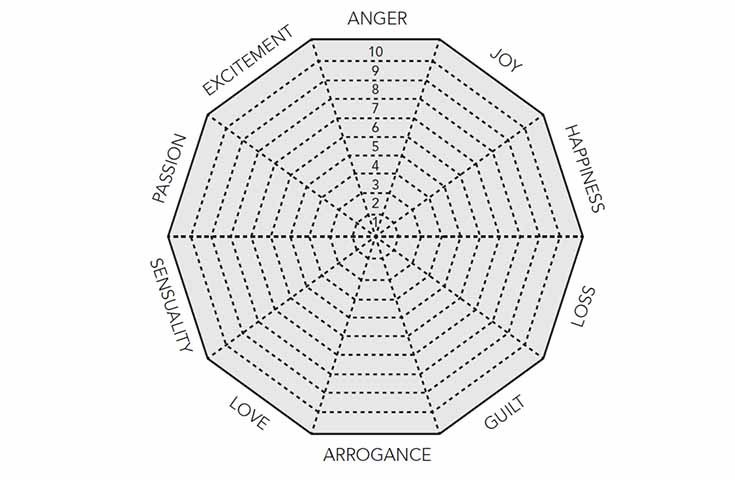
“Acting is the most personal of our crafts. The makeup of a human being – his physical, mental and emotional habits – influence his acting to a much greater extent than commonly recognized”
Lee Strasberg
Emotions make up the core components of the method actors instrument.
If you cannot access or identify with your emotions, no tools or level of technique will make you a great method actor. In fact, a great actor must be able to tap into emotions above and beyond their experience level. They must be able to express themselves and their character in a way that will often take them far out of their comfort zone.
In the actor’s attempt to show the human condition, warts and all, he or she must be able to get to grips with the complete wheel of human emotion.
The Wheel Of Emotion
“An actor needs to be able to experience and express at a level that most people cannot do or would not be comfortable with”
The Ultimate Guide To Method Acting
As a method actor trying to tap into the emotions of your character, there will be some emotions that you can access easily, while others will less familiar to you. It all depends on your past, your conditioning and your individual habits.
Tuning the key components of your method-acting instrument is about becoming more in-balance with the cross section of emotions, or a perfectly round Wheel of Emotion.
For each emotion on the diagram above, rate yourself out of ten. If you find an emotion easy to express, rate it a ten and draw a line at the appropriate level. At the opposite end, if you think an emotion is totally without the realms of your expression, give it a one.
Do this for each emotion, drawing a line at the correct level for each one. How rounded is your wheel of emotion? If it was the wheel of a car, would the car run smoothly, or would it be a bumpy ride?
Don’t worry if it is all over the place. That is to be expected early on in the process. Part of becoming an accomplished method actor is gradually smoothing out your wheel of emotion over time through practice.
How Can I Practice Emotions?
“Acting can literally save your life”
The Ultimate Guide To Method Acting
In modern society, we are very good at bottling up our emotions, often to the detriment of our health. A study by Harvard University, in fact, found that premature death from all causes increases by 35% among those who fail to express their emotions.
Using the Wheel of Emotion, actors can identify the emotions that they keep locked up, and work on letting them out. It can be a long, uncomfortable and challenging process, but you will emerge more accomplished as an actor, and a more rounded human being, by the end.
“Nothing gives me more pleasure than seeing students go from emotion suppressers to emotion expressers”
The Ultimate Guide To Method Acting
If you would like to know more about the Wheel of Emotion, why not pick up a copy of my new book. If you are looking for more formal training in method acting techniques, we have a range of classes. I’m sure we can find the right one for you!
I got this email the other day.
Now, it was a long (but interesting) email, so I have cherry picked the nub of the issue:
“Many of your emails celebrate the genius and greatness of actors such as Brando and McQueen and how by learning the Method and studying hard any actor could potentially reach those heady heights. Which may be true, although it seems that many of these ‘greats’ became good at acting and utilising the Method not only through practice but also the intensity of their emotional past.
(Then there was a bit about how Brando and other method actors seem to have tortured souls and continues…)
I was wondering if you ever go into detail discussing this more murky and dark side of acting in ‘Your Ultimate Acting Course’ and if you believe that the best Method actors are indeed people who have suffered great trauma, can more ‘together’ individuals ever be as great?” Tom
So, where to begin?
First off, it’s important to realise we all have an emotional past. Some are more traumatic than others, but this doesn’t matter.
When you are creating a character you are trying to inject them with correct emotion. As humans, we all experience all the major emotions. Intensity may vary but we experience them all.
The trick therefore is to use your experience to generate the correct emotion and fuse it with the character.
Now, you may be thinking that method actors are always using big traumatic events to fuel emotion. Not so. Sometimes we use simple, innocuous experiences to create an illusion.
For example, there was an actress friend of mine who was appearing in a West End show and needed to create the illusion that she wanted and desired her co-star, to the point where she rips his clothes off. Now, she wasn’t on the best of terms with this guy, but she managed to do it.
Guess what she thought of?
Eating a huge bowl of cornflakes. She said she loved them and devoured them every night after the show, so she used this to devour him on stage.
For me as an actor, I know that if I need to create a hysterical reaction then all I need to do is think of swimming in a cold lake. Don’t ask me why, it just does.
As you learn the technique you discover all kinds of experiences, many of which are simple, that cause particular reactions in you.
So, you see, you don’t need to delve into dark and murky areas to be a great method actor.
That said, I do believe that method actors become very sensitive and expressive due to the training. This can mean that they are impacted more by life events than others.
I actually think this is a good thing. It means you experience more of life – the good and the bad.
Here endith today’s lesson.
Brian
https://www.briantimoneyacting.co.uk
Now, last week I talked about how Steve McQueen took lines out of scripts and how Marlon Brando didn’t learn lines at all.
Well, Marlon had another approach he used on set that no one knew about.
When he walked on set, he would look at the crew, the director and the actors and think to himself “I don’t give a fugk what any of you think of me”.
I’m not making this up. In a recent documentary (Talk To Me Marlon) he said that was the best way to get rid of any fear.
You see, fear can cripple an actor’s work and Marlon’s approach released him from fear of judgment.
What’s interesting is that even Marlon one of the greatest method actors ever, had to overcome fear.
Try it out and see how you go.
Brian
https://www.briantimoneyacting.co.uk
At the weekend, I was talking to one of my former Ultimate Acting students who is now a pro actor.
He said he was working on a job and a crew member asked if he was a method man.
He said he was.
The reply that came back shocked him.
“How long do you method?”
He said, “Eh? What do you mean how long do I method?”
“You know, how long to get into character and do weird stuff?”
Ah, the innocence and naivety of the uninitiated.
You see, there is so much rubbish in the media about people doing weird and bizarre things all in the name of the method, that people don’t know the difference between the lies and the truth.
(Strasberg is probably birling in his grave!)
Now, the above statement by this crew member is wrong on so many levels I don’t know where to start…but let me give it a try.
The method is not about weird stuff, it’s a “method”.
When you bake a cake (not that I ever do because I’m a hard arse from Glasgow) the recipe outlines ingredients and guess what….a METHOD!
Change an ingredient and what do you get?…..a crap cake.
Change the method and what do you get?….a crap cake.
Following the instructions to the letter you get a big nice fluffy cake for tea.
(Not that I eat spongy, moist, Victoria sponge cakes because I’m a hard arse from Glasgow).
Now, if you were to elongate the method of making the cake would it make a better cake?
Nope. In fact, it could make it worse.
So, you see it’s not how long your method is, it’s how you use it that counts.
(Like so many other things in life)
Something to think about!
Brian


